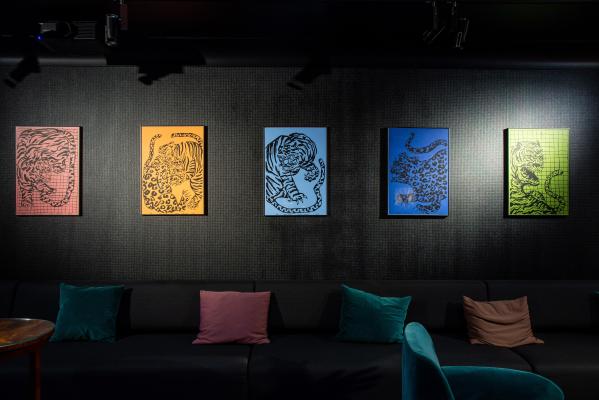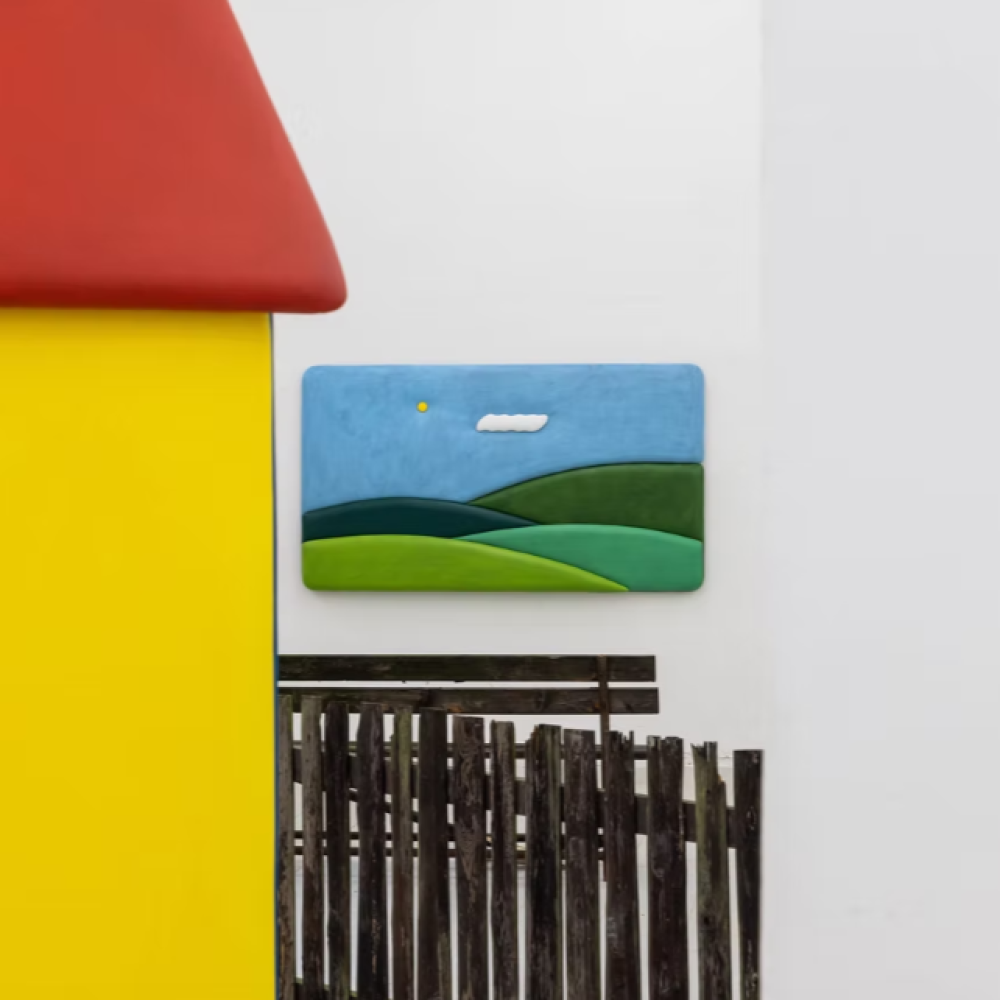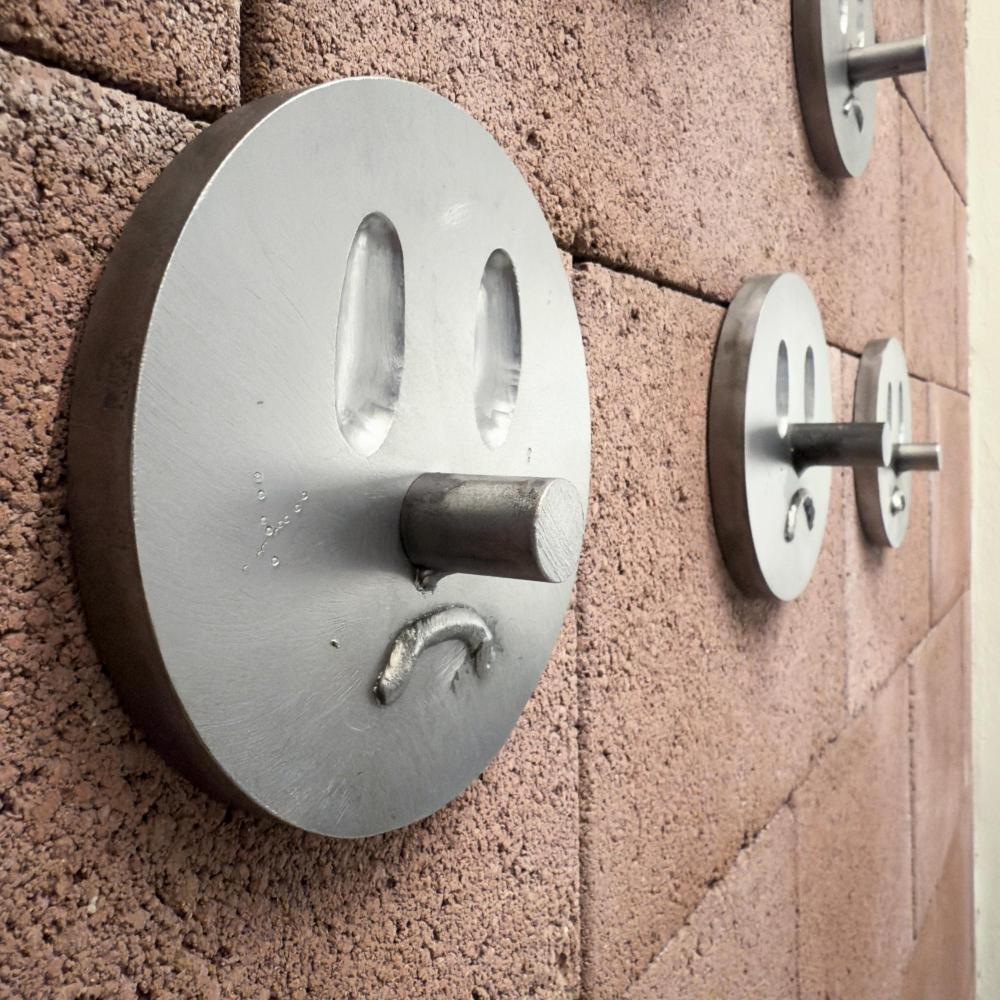
If you're a regular visitor, you'll know that Telegraph Gallery is not only the main exhibition hall on the ground floor, but also a number of temporary exhibitions installed in other areas of the building - most recently, for example, Nikola Emma Ryšavá's Colonnade in the cinema room. This time it will be a selling exhibition of Telegraphics, a series of prints created by ten different artists so far specifically for the Telegraph. The exhibition will take place from 2 to 5 November in the exclusive Lofts space and will feature prints by Pavel Korbička, Laura Limbourg, Veronika Gabrielová, Monika Žáková, Mark Ther, Dominik Adamec and Filip Kůrka, which have been on sale for some time, and new prints by Jana Kasalová, David Pešat and Jakub Špaňhel will be unveiled.
The first mentioned, Pavel Korbička (*1972), has already exhibited at the Telegraph in late 2021/early 2022, when he filled the gallery with an impressive site-specific light installation. It is the work with light, space, movement and sound that characterises Korbiček's work. In connection with the aforementioned exhibition, Pavel Korbička created serigraphy, which was meant to be a kind of reflection of what visitors could see. The theme refers to a motif that the viewer encounters immediately after entering the installation. It is a dynamic light pattern, broken up into regular points, which creates a visual tremor - at the same time, the graphic carries a metaphor of the optical experience inside the installation.
A major contributor to the expansion of the Telegraphic series was young artist Laura Limbourg (*1996), who, during a residency at the Telegraph and then in the US, created an entire series of prints with a tiger motif, reflecting on her travels in Southeast Asia, where she encountered pathologies such as human flesh trafficking, child prostitution and sex tourism, among others. Her response to these themes, however, is light-hearted, executed in a relaxed, primitivized manner and with a distinctive colour palette. This, along with the subject matter, reflects the spirit and ingrained traditions of Asian countries.
Another artist who created her prints during the residency is Veronika Gabrielová (*1992). Her work focuses on drawing, through which she mainly explores anthropological phenomena, clashes of cultures or socialization processes. She is characterized by line and figure. She has combined both aspects of her work in her graphic Triton*ka, where one of Olomouc's many Baroque fountains served as her inspiration. In addition to this homage to Olomouc, a certain feminist overlap can be seen here, in the transformation of the traditional mythological Triton into a female form.
Another female artist, Monika Žáková (*1987), also left her imprint after her residency. In addition to the fact that the facade of the Telegraph is adorned with her geometric mural, a work XY was created for the Telegraphics collection. The title of the work opens up space for different perspectives and interpretations. It can refer, for example, to gender distinctions, to the Cartesian coordinate system, to unknown values, to the marking of coordinates... This ambiguity leads us to a deeper reflection and critical examination of the work, as well as to a greater openness to new possibilities of understanding.
Visitors were particularly impressed by Mark Ther's exhibition May, which took place in 2022. The artist, who is dedicated to highly controversial topics, transformed the gallery space into a villa, whose visuality replicated the appearance of a 1980s villa in East Germany. The audience could gradually peek into each room and reveal the life of the owner of the created home and the secrets that are still hidden behind closed doors. The ubiquitous figure of Garfield the red cat, which the artist refers to as a kind of symbol that accompanied him throughout his childhood, became a distinctive element. The symbol of Garfield was thus an obvious choice for Ther's subject for the Telegraphic series.
Dominik Adamec also spent time in residence at the Telegraph. While he ended his residency with a sculpture exhibition, he also later created a serigraph titled Ambrozia to join the other Telegraphics. This print refers to the silent killer, sugar, which is depicted here in the form of a bred sugar beet. Ambrosia as the drink and food of the gods giving youth, beauty and immortality. Immortality then becomes a kind of artificial ingredient in human life. Sugar has always functioned as a human mammal of pleasure, after ingestion of which there is a satisfaction after which there seems to be no death. The inscription DIE STERBLICHKEIT ANSTATT DIE EWIGKEIT, AMBROZIA GLUTAMAN - mortality instead of eternity - is meant to remind us that, for all the "sugar" of everyday life, one should not forget that one day one will leave this world.
Another contribution is a graphic entitled Solitaire by Filip Kůrka. His residency ended with a performance of the same name and a subsequent exhibition. Kůrka is well known for his pornographic, often scandalous, themes. Recently, however, he has undergone a personal transformation and has become the founder of a movement he calls hunter realism. And it is Solitaire that is his distinctive embodiment.
As mentioned, the latest addition to the Telegraphics is also one by Jana Kasalova, who will be featured in an upcoming exhibition titled Connections. Titled "Tabulae Terrae" (translated as "Maps of the Earth"), the print explores the topography of place and the relationship between humans and the environment. In the process of creation, she uses the properties of translucent paper, which allows her maps to appear as multi-layered records of a unique time and reality. The result is a kind of "custom cartography" that references specific memories.
Another graphic novelty is the work of Reward by David Pešat, who stayed at the Telegraph this spring. The subjects of Pešat's painting encapsulate the relationship between figuration and abstraction. He sees visuality as the "raw material" or material to be transformed and processed. Using expressive painting, colours and the "act of creation" in his work, he depicts external pressures and internal emotions. In his work, Pešat is a "sculptor", a creator of a different view of the subject world during the process of creation and dissolution. Pešat's paintings are thus transformations and references of the constant inner transformations of man that shape and constantly influence his view of the world.
The Telegraph's most recent artist to date is Jakub Špaňhel, who previously created a graphic for the Telegraph featuring the Ukrainian church of St Andrew, with the proceeds from the sale of this graphic benefiting charity - specifically in support of war-torn Ukraine. Jakub's work is permeated by two strands - minimalism, consisting in the mechanical repetition of a motif using a paint roller, and a strong gestural expression through which he records impressions from the architecture, decoration and space of sacred buildings or even secular spaces, such as central banks. Spaňhel's new print for the Telegraph follows precisely the path of a rather minimalist expression through a repeated pattern. Such as the butterflies here, in their various stages of life. Green caterpillars are intertwined between the yellow butterfly wings. He works with only a few colours here - yellow, green, a few red details and a bold black, which is used for the intense contouring of the individual butterfly bodies.
All of these prints will be on sale immediately after the opening of the exhibition - on November 2 at 6 pm - so you can take your own artwork home with you.
By Barbora Langová, Hana Kozáková / Telegraph Gallery

















